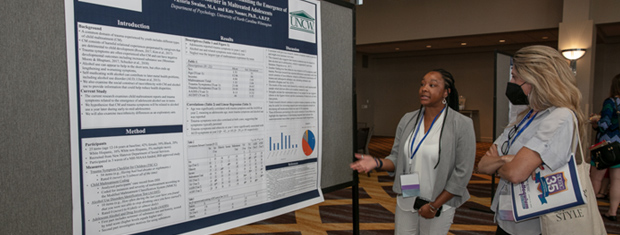




The APSAC Advisor is a peer reviewed quarterly news journal for professionals in the field of child abuse and neglect.
The APSAC Advisor provides succinct, data-based, practice-oriented articles that keep interdisciplinary professionals
informed of the latest developments in policy and practice the field of child maltreatment. It is designed to highlight
best practices in the field and publish original articles and current information about child maltreatment for professionals
from a variety of backgrounds including medicine, law, law enforcement, social work, child protective services, psychology,
public health and prevention in the U.S.
 If you wish to learn more about submitting an article to the Advisor, please click here.
If you wish to learn more about submitting an article to the Advisor, please click here.
This library contains Advisor issues dating back to the first issue in 1988. The most recent issue appears at the top.
Scroll down to select past issues by year and issue number. Once a publication appears in the box, you
can use the Enlarge button to open the document in a new window or tab (depending on how your browser is set up).
This will allow you to view the document with larger print.
To print a document, first use the Enlarge button to open the document in a new window or tab. Then use your browser's Print command.
To return here from a new tab, close the tab. To return from a new window, click your browser's Back button.
In the listing below, click on a year and issue number to see the articles in that publication.
2007 Number 1 and 2
At Issue: Child Welfare by Fad
If the past is prologue in child welfare, the next program fad may be deployed as early as 2007, and successors are sure to follow. But what will they be? More important, will they demonstrably benefit abused and neglected children?
Implementation: The Missing Link Between Research and Practice
For the past two decades, an international experiment has been underway to make better use of research-based prevention and treatment interventions in human service settings, such as child welfare, employment, health, juvenile justice, mental health, and substance abuse. So far, the results of this national experiment are not promising.
The Impact of Domestic Violence on Infant Health Factors and Child Maltreatment
A recent review conservatively estimated the lifetime prevalence of violence against women by their domestic partners to be between 25% and 30% with over half of female victims living in households with children under the age of 12 (Tjaden & Thoennes, 2000). Research has established that domestic violence not only affects women across their lifespan but has a profound impact on the lives of their children as well.
NCTSN: Working for the Future of Traumatized Children
Trauma is pervasive in the lives of American children. It often comes in the form of chronic sexual or physical abuse, or neglect, but trauma may also result from natural disasters, accidents, school and community violence, the sudden death of a loved one, or life-threatening illness. To address the serious and often underestimated significance of traumatic events on the lives of children, their families, and society, Congress established the National Child Traumatic Stress Network (NCTSN) in 2000.
The purpose of Journal Highlights is to alert readers to current literature on child abuse. Selected articles from journals representing the variety of disciplines reflected in APSAC's membership are presented in the form of an annotated bibliography.
APSAC Advisor 19(1-2): Full Issue